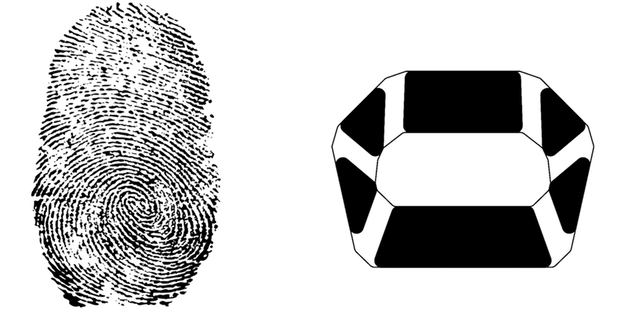
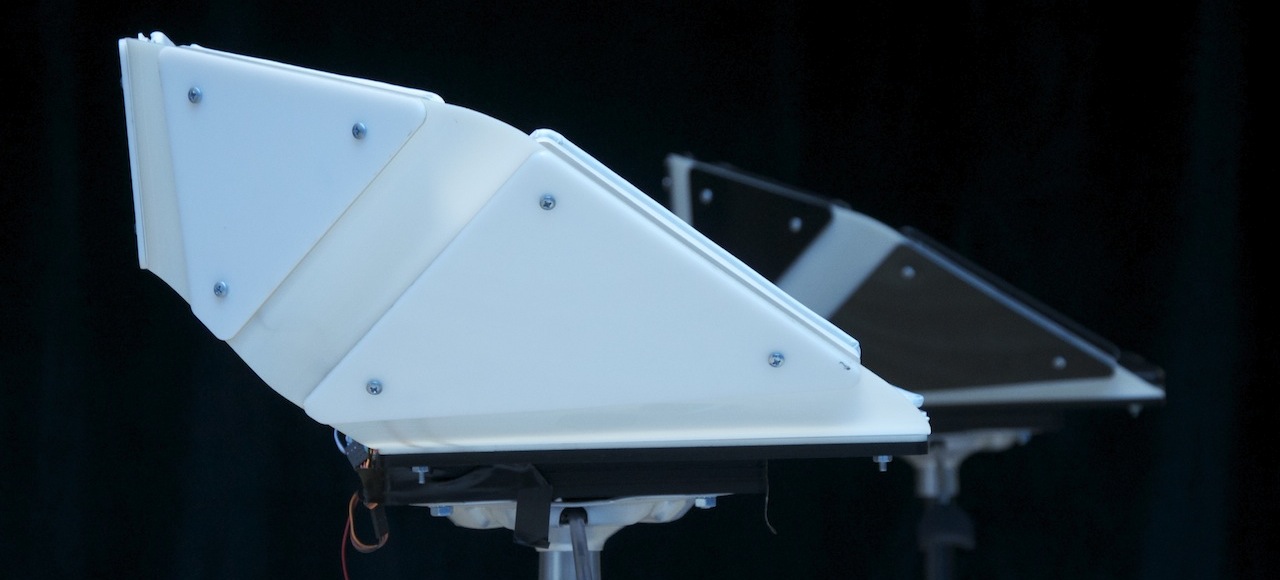
BodyPods inquire the capacity of architecture to mediate human presence through digital information. Analogous to a fingerprint, a bodyprint manifests a person’s sitting posture as a distribution of their body pressure on the seat. When a person sits on one BodyPod, their bodyprint is visuallly manifested on the surface of the other BodyPod. If the person leaves, their bodyprint fades away with time.


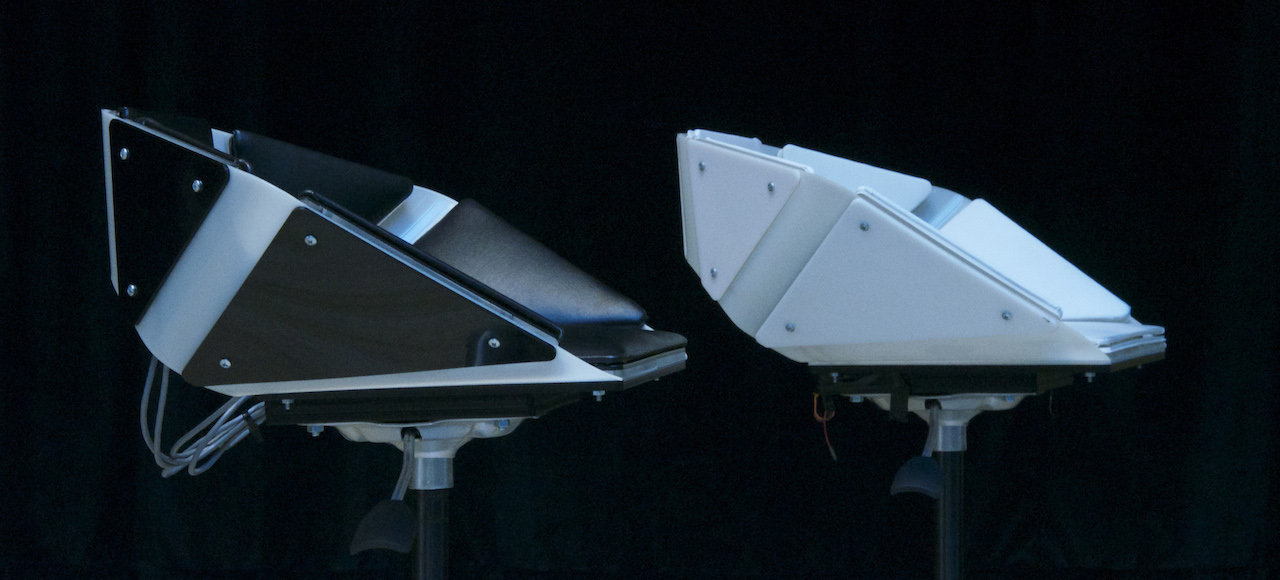
Prior works in the field retrofitted furniture with technology that were never designed for, resulting in technological complexity (often hundreds of sensors), awkward functionality, poor usability, and bad design aesthetics. BodyPods detect 8 sitting postures using only 6 pressure sensors through a novel design that adjust its shape to body anatomy during posture transitions.


The geometry is tailored to the anatomy of a user, allowing sensors to be placed close to body parts that are used as reference points. This minimized the number of required sensors and simplified their signal analysis. The design is structurally self-supporting: as the back leans, the sides gently squeeze the torso preventing the back from leaning further. A parametric CAD model was used for kinematic analysis and customization.

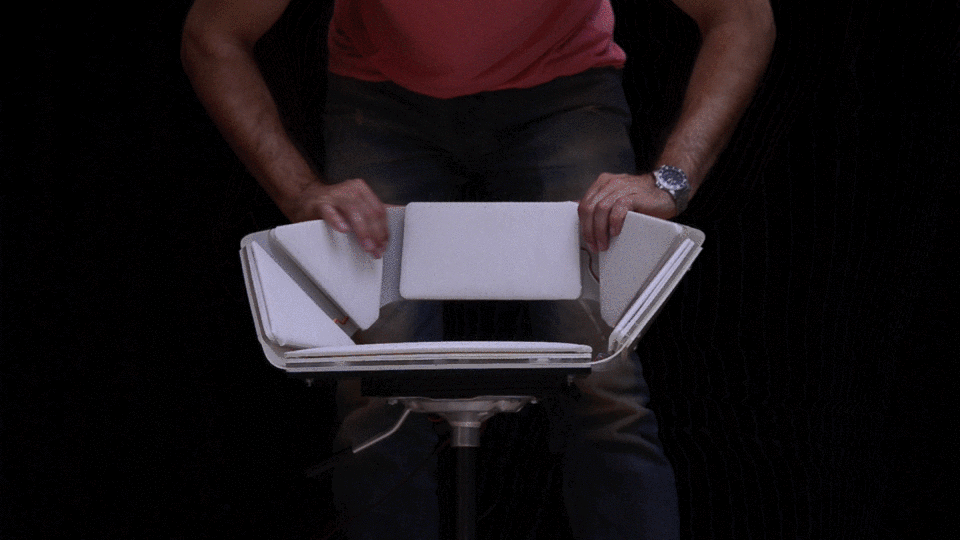
Each BodyPod is made of a flexible substrate (thermoformed Nylon) with 6 rigid panels (Delrin) mounted on it. The synergy of the two materials allows the seat to flex and maintain contact with sensors during movements. BodyPods are fabricated entirely in a laser cutter and can be assembled within a day.
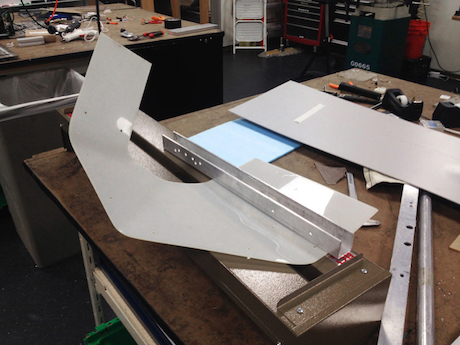


Each pad contains a pressure sensor (force sensitive resistor) and an array of RGB LED lights. The pads connect to a microcontroller, which sends the data to a server. Paired BodyPods share data through the internet by mapping the sensors of one seat to the corresponding light-emitting pads of the other seat.
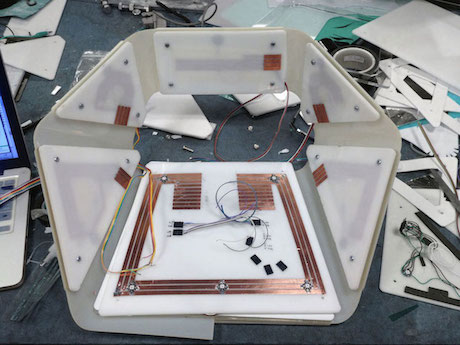
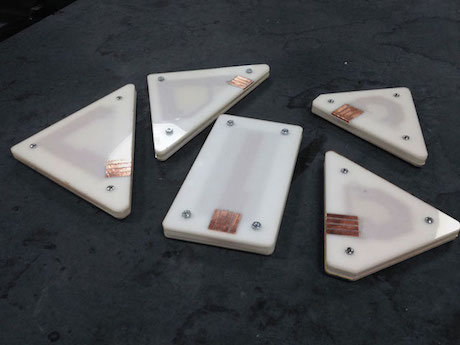
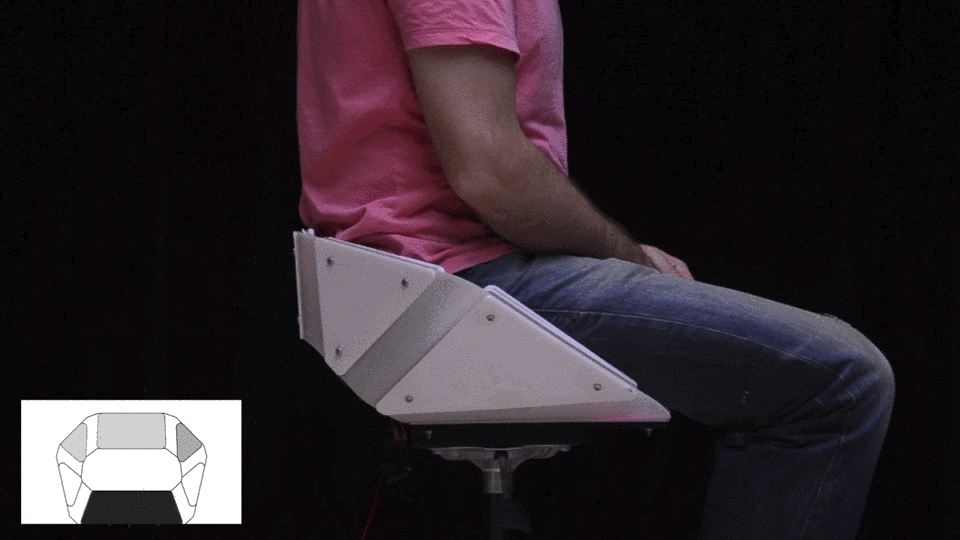
BodyPods respond smoothly to body movements. Results from a 10-person user study showed that BodyPods recognize 8 sitting postures and 2 torso rotations. Potential application areas include tangible or bodily gestural interfaces, musical instruments, game controllers, medical devices, and social experiments.


Research conducted during internship at Microsoft Research. Mentors: A.J. Brush, Asta Roseway
Papanikolaou, D. BodyPrint: Exploring Architecture as a Medium for Human Interaction. In Proceedings of the 2016 Association for Computer Aided Design in Architecture (ACADIA): Posthuman Frontiers: Data, Designers and Cognitive Machines (University of Michigan Taubman College, Ann Arbor, Michigan, 27 - 29 October 2016).
Dimitris Papanikolaou, A.J. Bernheim Brush, and Asta Roseway. 2015. BodyPods: Designing Posture Sensing Chairs for Capturing and Sharing Implicit Interactions. In Proceedings of the Ninth International Conference on Tangible, Embedded, and Embodied Interaction (TEI ‘15). ACM, New York, NY, USA. 375-382.
BodyPods from Dimitris Papanikolaou on Vimeo.